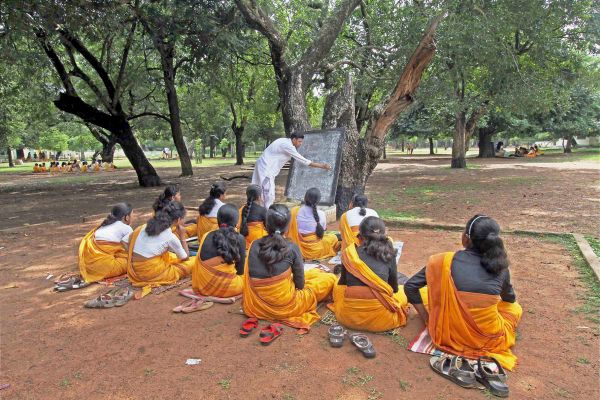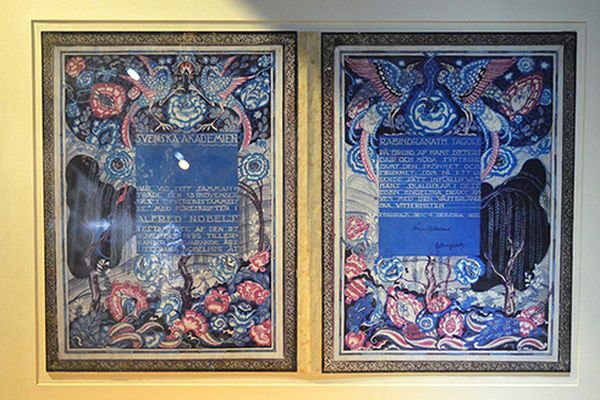Studying amid peace and serenity
- POSTED ON: 18 Oct, 2023
- TOTAL VIEWS: 150 Views
- POSTED BY: Rohini Ramakrishnan | Article by Madhuvanti S. Krishnan
- ARTICLE POINTS: 150 Points
Santiniketan means ‘Abode of peace’. Today, it is a university town that was recently recognised by UNESCO as a World Heritage Site; the 41st in India. But its origins lie back in 1862 when Debendranath Tagore built a house in this area of Bolpur, a town that is around 150km north of Kolkata, West Bengal.

In 1901, his son, the poet-philosopher Rabindranath Tagore, established a school in a portion of the land owned by his father. Envisioned on the lines of a gurukul, the vision was to rise above religious and cultural boundaries and propound a universal humanity. In 1921, Visva Bharati University was established. It was recognised as a Central University in 1951.
The school followed an open-air model with teachers sitting on raised stone platforms and the students sitting in a semi-circle around their respective gurus. When Rabindranath Tagore received the Nobel Prize, he used the prize money to expand the school. Today the campus is spread over 1000 acres.
Cultural mix
Within Santiniketan, there are independent schools and centres of learning. Kala Bhavan is the visual and fine arts centre that offers courses on art, painting, design, sculpture and graphics. Sangeet Bhavan specialises in Hindustani Classical Music and Rabindrasangeet but also teaches folk music and dance and drama. Arabic, Persian, Bengali, Chinese, Hindi, Japanese, Odia, Santali, and Sanskrit are taught at Bhasa Bhavan. Santiniketan also offers courses in agriculture and rural development apart from certificate courses in leathercraft, book binding, hand-made packaging, batik and making hand-made paper.
Santiniketan also hosts a variety of festivals. Over three days in December is the Poush Mela, which marks the harvest season. Holi is known as Basanta Utsava to welcome spring. The monsoon’s arrival is marked by the Barsha Mangal. Just before Durga Puja are Ananda Bazar, a fair to showcase students’ handicrafts, and Sharad Utsav. The birth anniversary of artist Nandalal Bose is marked with the Nandan Mela.
Several structures in Santiniketan have been restored by the Archaeological Survey of India (ASI). The UNESCO chose it as World Heritage Site because its “ensemble of historic buildings, landscapes and gardens, pavilions, artworks, and continuing educational and cultural traditions that together express Outstanding Universal Value”.
DID YOU KNOW?
Rabindra Bhavan

Once Tagore’s home and now a museum, it offers a glimpse into Rabindranath Tagore’s life. It contains the poet’s personal belongings and showcases his books, letters, manuscripts, paintings, drawings, and photographs. His Nobel Prize medal is also displayed. It is part of what is called the Uttarayan Complex, which comprises the five houses the poet lived in.
Now that you are done learning all about Santiniketan, here’s a fun game called Word Flower to try. From the given letters, find as many words as possible that are five or more letters long. The central letter must be included in each word. Enter letters by clicking on them, or by typing them in. You can use each of the given letters only once. The word is EDUCATION.